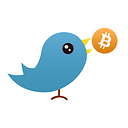What is Web 3.0? The Next Generation of the Internet, Explained
Web 3.0, or Web3, has become an increasingly common buzzword typically used as a blanket term to describe blockchain, cryptocurrencies, and DeFi. However, to truly understand what this word means and why Web3 could be revolutionary, it is important to look at the history of the internet and why the status quo needs to be changed.
The internet has been around for several decades now and has undergone many drastic changes. What was once a simple inter-university messaging system has now become the backbone of our modern society, and trillions of dollars of value have been created thanks to the capabilities of the internet.
Web 1.0 is the term used to describe the internet of the 90s and early 2000s. Back then, most websites had very little user interaction and instead worked as static pages displaying information to the users. Examples of Web 1.0 sites include Wikipedia, news sites, and early versions of blogs. There was very little user-generated content, along with the lack of website accounts, and the internet was more of a reference than a tool.
The heralding of Web 2.0 is largely attributed to early social media sites and the ability of users to curate their online experience. Instead of having read-only pages, websites like Facebook and MySpace allowed users to create social profiles to share their interests and create their own online space. The internet went from read-only to now allowing users to both read and write. This new data, given to large companies behind the new software, was incredibly valuable and allowed these companies to sell targeted online ads to their consumers. During this period, which is still ongoing today, the user is also the product, as their time and attention are sold to the highest bidder in the form of ads and curated content. Additionally, each person’s experience in Web 2.0 is completely different, and algorithms are largely responsible for what each person sees in their online accounts.
Even though Web 2.0 brought lots of benefits to society and created a much more connected world, it has also caused lots of privacy issues and the monopolization of power online. There are a handful of companies that have hundreds of pages of information about billions of people around the world, and there is little the average person can do to protect themselves from the all-encompassing data mining that takes place every time they look at their phone or check a social media site.
To combat these issues of monopolization and centralization, Web 3.0 was created. There are many different definitions and interpretations of Web 3.0, but they all center around the idea of the user owning their data and having more control over who has access to it. Web 3.0 also emphasizes the importance of decentralization and the lack of key players who have a disproportionate influence on the internet.
As one can imagine, the decentralized, trustless, and censorship-resistant properties of the blockchain were seen as the perfect vehicle to usher in this new generation of the internet. Smart contract blockchains like Ethereum allow anyone to create programs and code that can be accessed by anyone, anywhere in the world, without having to go through an intermediary. Furthermore, decentralized applications do not collect data on their customers or serve them ads, but instead use other economic incentives to function, such as charging users a small fee for using their service, or users being required to host the data for their social media profile on their own computer or phone.
One of the most prominent features of Web3 is the prevalence of decentralized autonomous organizations, or DAOs. A DAO is an organization that runs similar to a company, but instead of having stock shares and a board of directors, anyone who holds the cryptocurrency token for a specific DAO has proportional voting rights on any decisions made within the organization. This model is much more democratic and decentralized than the current way companies are organized and will incentivize average users to promote and use certain applications.
There are still a lot of unanswered questions about Web 3.0 that could hinder its adoption in the short term. For example, censoring harmful or unwanted content is easy in Web 2, since companies like Facebook have full control over their platforms and can enforce the terms and conditions at their own will. However, in the Web3 world, the question of how to censor objectively malicious or harmful content while still promoting free speech and open discussions has yet to be solved. Additionally, even though many people are uncomfortable with the current status quo of their data being sold, it is unknown if they care enough to consider the switch to entirely new platforms after having decades of use on traditional social media sites.
Web3 is a new frontier that promises to revolutionize the way we own our data and use the internet. Thanks to blockchain, we can interact in an online environment without the fear of data mining or censorship, and work for DAOs in exchange for tokens or other compensation. Web3 is far from perfect, and over the coming years, we will see greater iterations of this idea that will one day be the dominant internet philosophy.
Stay tuned for part 2, where we will discuss what Web3 will look like and discuss some of the biggest Web3 applications and DAOs.
By Lincoln Murr
